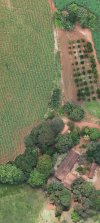- Joined
- Nov 18, 2017
- Messages
- 969
- Reactions
- 530
- Age
- 67
I'd highly agree with ya... I reread my post and noticed I didn't indicate that too. Yes, SDK in a company is extremely common and often the Base to add unique subsection for device (drone). No company will use different calls or library procedure names different on each product... results in mass programming confusion and huge libraries.The thing is, dji firmware api is almost identical to all drones. As documented here:

dji-firmware-tools/dji-dumlv1-flyc.lua at master · o-gs/dji-firmware-tools
Tools for handling firmwares of DJI products, with focus on quadcopters. - dji-firmware-tools/dji-dumlv1-flyc.lua at master · o-gs/dji-firmware-toolsgithub.com
My question is you know for sure waypoints isnt in the firrmware? It will save me some time if you have tested that.
Many functions are not visible in the app or sdk, however they still exist. For example the fpv racing drone supports virtualsticks (and much more), but have no sdk, or app that supports it. And not to forget setting gimbal in free mode
My very basic 3d-mapping with the mini2, without sdk.
Mapping
All I have available is a Mini 2 and I need to create a map of 40 acres. Because there isn't SDK support I'll have to do this manually. Any suggestions on how much overlap I should have for each picture? Software I should use to stitch them together? Any other tips that will help me succeed...mavicpilots.com
Thanks for your reference too... nice!
My point was any program procedure needs to be configured on device in some fashion to be usable in program. If not, the procedure needs to call each procedure or stage seperate or create a named procedure within program.
Back to M3... personally I have no reference at this stage. I haven't coded hardware for years and I'm going off video hearsay in a hopeful positive position. Logically, I would assume the M3 FW contains a large library of procedural calls to execute future features... or DJI will slip it in with a new FW update. This Jan 24th FW update was pretty large, I'm assuming it contained undocumented features yet to be announced or activated.












